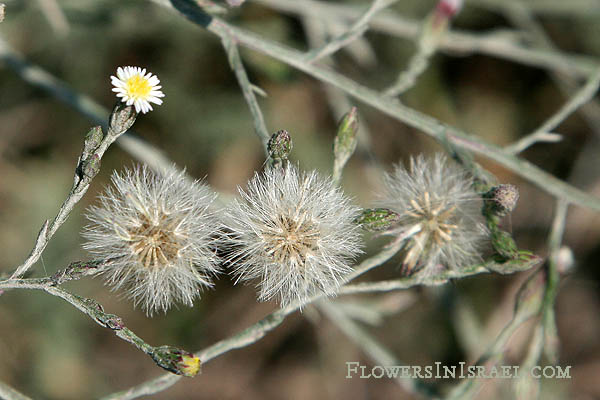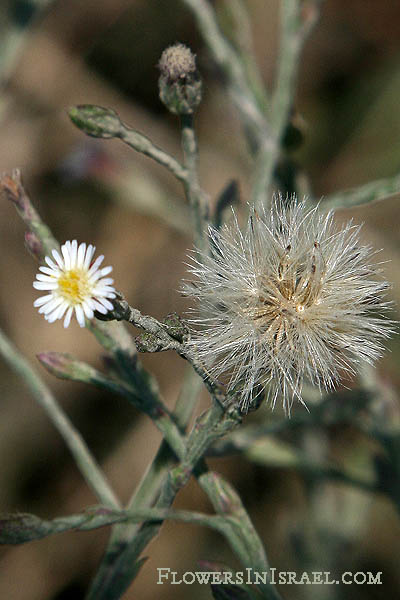Hebrew: אסתר מרצעני
| Scientific name: | Aster subulatus Michx. | |
| Synonym name: | Symphyotrichum subulatum (Michx.) G.L. Nesom | |
| Common name: | Annual Saltmarsh Aster | |
| Hebrew name: | אסתר מרצעני | |
| Family: | Compositae / Asteraceae, מורכבים |

|
| Life form: | Annual | |
| Stems: | 30–180 cm high, erect, almost glabrous; stems branched above, rigid, smooth, reddish | |
| Leaves: | Alternate, entire, smooth | |
| Flowers: | White daisies with 5mm long ‘petals’ (ray florets) | |
| Fruits / pods: | Achenes 1.5–2 mm long, narrow, 4–5 ribbed, sparsely hairy; pappus whitish | |
| Flowering Period: | April, May, June, July, August, September, October, November | |
| Habitat: | Disturbed habitats | |
| Distribution: | Mediterranean Woodlands and Shrublands, Semi-steppe shrublands, Shrub-steppes, Deserts and extreme deserts | |
| Chorotype: | American | |
| Summer shedding: | Ephemeral |

Derivation of the botanical name: Aster, ἀστήρ (astḗr), a star, referring to the shape of the flower head. subulatus, subula, a fine sharp point, lit. an awl; awl-shaped. Symphyotrichum , from Greek symphysis, "to grow together", and trichos or trichinos, "hair" in possible reference to the flower anthers. The Hebrew name: אסתר, aster, transliteration from the scientific name.
|